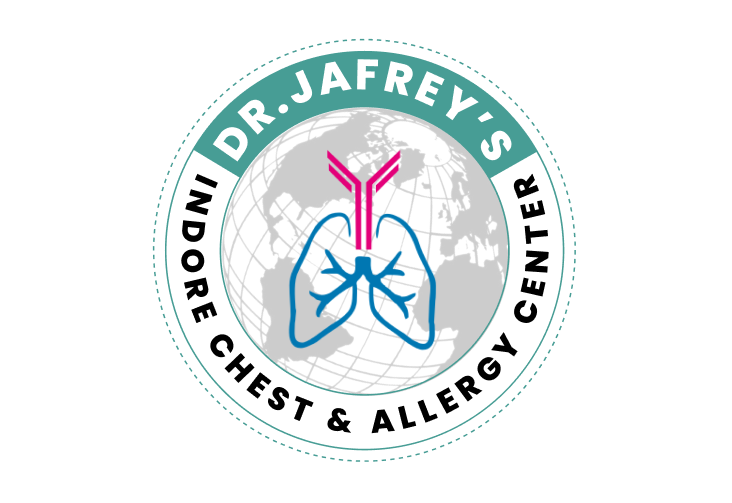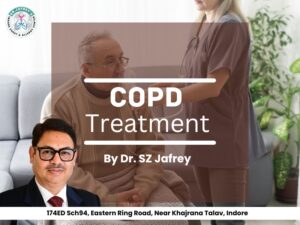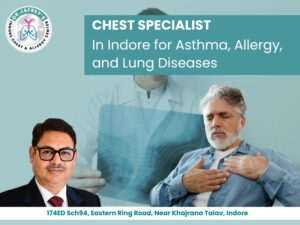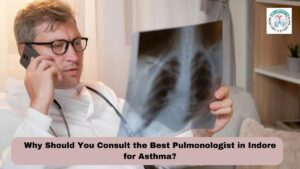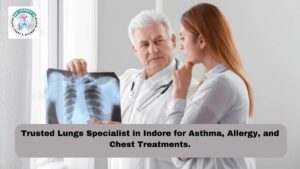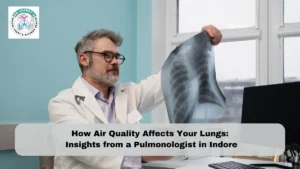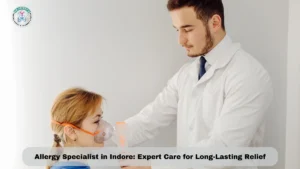Anaphylaxis
Asthma / Allergy Specialist / Lung & Respiratory Specialist
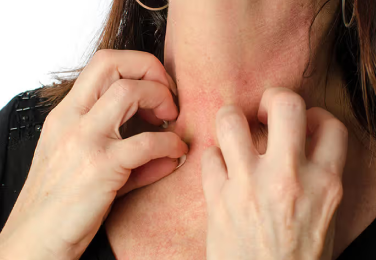
Expert Care for Anaphylaxis
At Dr. S Z Jafrey Indore Chest & Allergy Center, we are committed to providing exceptional care for severe allergic reactions, including Anaphylaxis. Our team of experts is dedicated to diagnosing, managing, and preventing this life-threatening condition, ensuring your safety and well-being.
Understanding Anaphylaxis
Anaphylaxis is a severe, potentially life-threatening allergic reaction that can occur rapidly after exposure to an allergen. It requires immediate medical attention and intervention.
Symptoms of Anaphylaxis:
- Difficulty breathing
- Swelling of the face, lips, throat, and tongue
- Rapid or weak pulse
- Drop in blood pressure
- Skin reactions such as hives, redness, or paleness
- Nausea, vomiting, or diarrhea
- Dizziness or fainting
- Loss of consciousness
Common Triggers:
- Foods (e.g., peanuts, tree nuts, shellfish, milk, eggs)
- Medications (e.g., antibiotics, aspirin, nonsteroidal anti-inflammatory drugs)
- Insect stings (e.g., bees, wasps, ants)
- Latex
- Exercise (in rare cases, especially if combined with food or medication allergies)
Diagnosis and Treatment
At Dr. S Z Jafrey Indore Chest & Allergy Center, we prioritize quick and accurate diagnosis and provide comprehensive treatment plans for managing anaphylaxis.
Diagnostic Process:
- Patient History: Detailed review of symptoms, potential triggers, and medical history.
- Physical Examination: Comprehensive examination to identify signs of an allergic reaction.
- Allergy Testing: Skin prick tests, blood tests, or oral food challenges to identify specific allergens.
Emergency Treatment:
Epinephrine Injection: Immediate administration of epinephrine (adrenaline) via an auto-injector (e.g., EpiPen) to counteract the allergic reaction.
Call Emergency Services: Immediate medical attention is crucial. Dial emergency services (e.g., 112 or 911) for further assistance and transportation to a medical facility.
Additional Medications: Antihistamines and corticosteroids to reduce symptoms and prevent recurrence.
Long-term Management:
Avoidance of Triggers: Identifying and strictly avoiding known allergens.
Emergency Action Plan: Developing a personalized action plan detailing steps to take during an anaphylactic reaction.
Epinephrine Auto-Injector: Prescribing and training patients on the use of an epinephrine auto-injector for emergency use.
Medical Alert Identification: Encouraging the use of medical alert bracelets or necklaces indicating known allergies.
Education: Providing information on recognizing early signs of anaphylaxis and when to seek emergency care.
